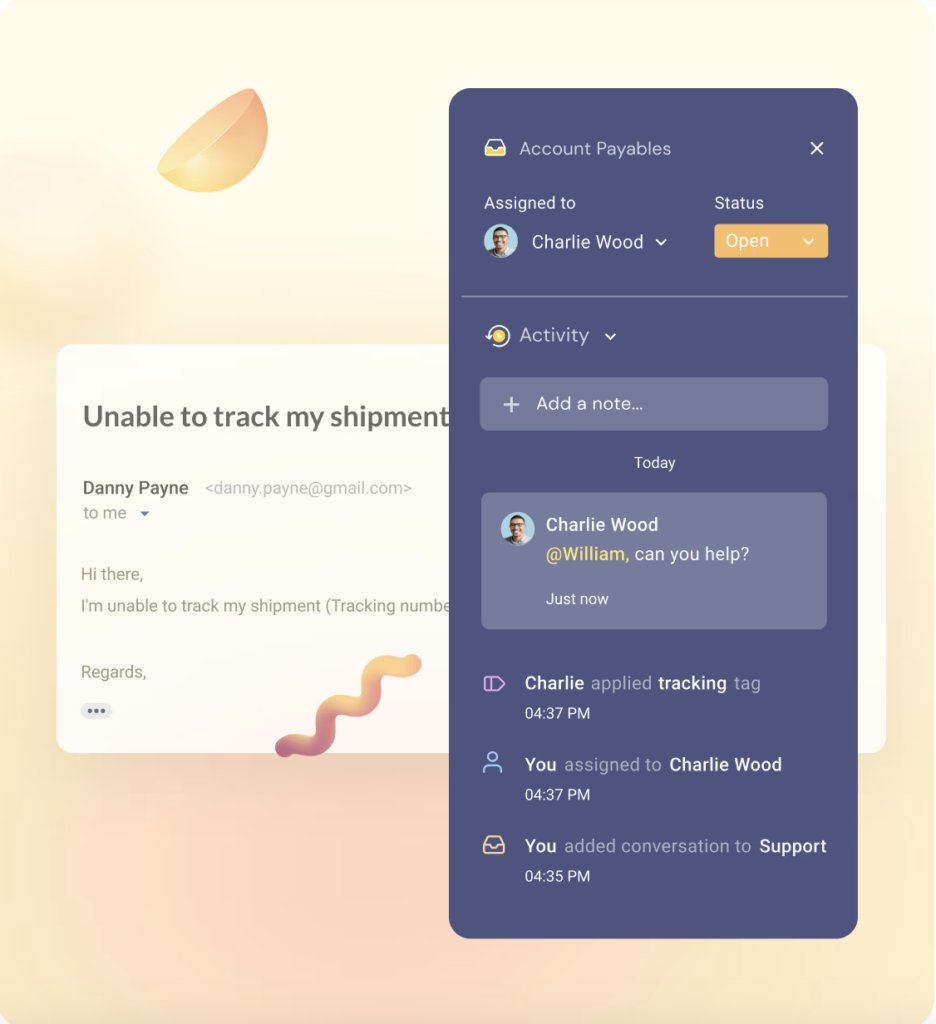E-commerce Returns Management: Processes & Best Practices

Table of contents
Online shopping has made it super convenient for all of us to buy products. And as orders have gone up, so have returns.
What happens when a customer receives a defective item or if the delivered item looks different from what they were expecting? Simple, they’d initiate a return.
Imagine managing these returns at scale. For e-commerce companies, this could be a nightmare if they don’t have the right processes in place.
In this article, we’ll examine how e-commerce companies can create and implement a robust returns management process.
Something that keeps both customers happy and your bottom line healthy.
Table of Contents
- What are e-commerce returns?
- What is e-commerce returns management?
- Challenges in e-commerce returns
- How to reduce e-commerce returns?
- E-commerce returns management best practices
- 1. Have a customer-friendly return policy
- 2. Make returns easy
- 3. Have the right automations in place
- 4. Equip your receiving team with the right instructions
- 5. Seamless internal collaboration is a must-have
- 6. Recovering the highest value from returned goods
- 7. Assessing the financial impact of returns
- 8. Listen to your customers
- Final Words
What are e-commerce returns?
E-commerce returns are items that customers send back after buying online. Customers return products for several reasons, including a defect, a mismatch in size, or the product not performing as expected.
As a brand, handling these returns efficiently is crucial. It’s not just about taking back a product. It’s also about maintaining a good relationship with the customer. A smooth return process can encourage them to shop with you again.
What is e-commerce returns management?
E-commerce returns management is how businesses deal with items that customers return or send back. It’s a plan for handling these returns smoothly and efficiently.
Let’s break down the process step-by-step:
- Customer returns the product: Say a customer buys a product online and returns it after it is delivered. Here, the e-commerce returns management process begins. At this stage, it’s important to ensure a hassle-free return process—ideally, have door pickup.
- Business inspects the product: Once the item is returned, the business must thoroughly inspect it. This step is vital to ensure the product is in its original condition and meets the return policy criteria. The inspection might involve checking for any damage, verifying that it is the correct item, and ensuring that it hasn’t been excessively used or altered.
- Refund or Exchange offered: Once the returned product passes the inspection, the business then proceeds to the next step. Depending on the company’s policy and the customer’s preference, the business offers either a refund or an exchange. A refund might be processed back to the customer’s original payment method, while an exchange could involve sending a replacement to the customer.
- Communication with the Customer: Keep customers informed throughout the return process. Regular updates on receipt, inspection, and refund/exchange status build trust and show efficiency.
Challenges in e-commerce returns
E-commerce returns have their own unique challenges that can affect a business’s operations and customer relations. Here are some of the challenges that you should be aware of:
1. High Costs
E-commerce returns management involves several expenses that can significantly impact a business’s bottom line. For instance, shipping bulky home decor items back to the warehouse can be expensive.
Solution: Consider offering exchange discounts to encourage customers to swap for a better fit, saving on the cost of double shipping.
2. Logistical Hurdles
The process of managing the reverse flow of goods requires careful coordination and can strain resources.
For example, a company specializing in electronics may receive returns from various geographical locations, making the process of collecting, sorting, and redistributing items complex and time-consuming.
Solution: Implementing return centers or hubs in various regions could streamline this process. This approach means that instead of sending all returns to a single, central location, a business manages returns through multiple centers spread across different areas or regions. This ensures that items are quickly inspected, refurbished if necessary, and prepared for resale or redistribution. It also minimizes downtime and logistic complexities.
3. Fraudulent Returns
Returns fraud can take various forms, from benign to highly organized criminal activities, and can significantly drain revenue. An example of returns fraud could include customers buying items, using them for a specific purpose, and then returning them for a full refund.
Solution: Introduce clear return policies, perhaps with a digital verification system that tracks product usage or condition. This can help identify and prevent fraudulent return practices. Install fraud prevention plugin which is ideal for WooCommerce stores.
4. High Customer Expectations
In the competitive world of e-commerce, meeting and exceeding customer expectations on returns is crucial for loyalty and repeat business. For example, customers may become frustrated if they have to wait long for their return to be acknowledged and processed.
Solution: By automating the return acknowledgment process and providing timely updates, customers can be reassured that their needs are being promptly addressed.
5. Environmental Impact
Managing the ecological footprint of the returns process is important for businesses committed to sustainability.
For instance, a business selling electronics may face the challenge of properly disposing or recycling products that cannot be resold.
Solution: Establishing a partnership with recycling firms can help. It can ensure that items that can’t be resold are dealt with in an environmentally responsible manner, reducing landfill waste and potentially recovering valuable materials.
6. Impact on Profitability
A high volume of returns can directly affect the profitability of a business – not in a good way.
For example, seasonal merchandise like holiday decorations may be returned in large volumes post-season, often too late to be resold in the current year.
Solution: Offering store credit instead of refunds for such items can help maintain profitability. Credit will most likely be spent within the same business, potentially on items with better margins or with a lower likelihood of being returned.
Recommended read: Top 7 Customer Service Software for E-commerce Businesses
How to reduce e-commerce returns?
Reducing e-commerce returns is a critical goal for any online retailer. Effective e-commerce returns management can save costs, maintain profit margins, and ensure customer satisfaction.
Here are some strategies to achieve this:
- Accurate Product Descriptions: Clear, detailed product descriptions prevent misunderstandings. For example, providing precise measurements, material descriptions, and high-quality images can help customers make informed decisions, reducing the likelihood of returns due to unmet expectations.
- Size Guides and Tools: Returns due to a mismatch in size are common, especially for clothing. A business can implement interactive virtual fitting tools to help customers choose the right fit when they’re buying.
- Customer Reviews: Encouraging and displaying customer reviews can offer real-life insights into the product’s fit and quality, aiding potential buyers in making better choices.
- Quality Control: Rigorous quality checks before dispatch can ensure that every item sent meets the company’s standards, reducing returns due to defects or damage.
- Flexible Exchange Policies: Offering an easy exchange can be more appealing than a refund. For instance, if a customer orders a custom t-shirt in the wrong size, facilitating a hassle-free exchange for the correct size can avoid a full refund.
- Feedback Loops: Implementing a system to collect feedback on why customers return items can help identify patterns and areas of improvement in your products and internal processes. For instance, high return rates on wireless headphones due to customer discomfort (clamping force, ear pads) can be used to improve future product design, tackling the root cause of returns.
- Exceptional Customer Service: Providing prompt and helpful responses to customer inquiries can resolve issues before they result in returns. For example, prompt customer support (live chat!) can answer questions and prevent returns. A well-informed customer is less likely to buy the wrong item.
Recommended read: How E-commerce Live Chat is Shaping Online Shopping Experiences
E-commerce returns management best practices
While reducing e-commerce returns is crucial for a business, sometimes returns become unavoidable. And that’s why you should know the best practices to handle them adeptly.
Here are the key best practices that can transform returns into a seamless process. They will also help enhance the customer experience and reinforce brand loyalty.
1. Have a customer-friendly return policy
Customers today make highly informed decisions. A brand’s return policy sits at the very top among the factors they consider before purchasing.
It is, in fact, something that tells the customer whether or not they can trust your brand.
So, how do you create a return policy that doesn’t deter customers? Here’s a simple hack: make it easy to find, read, and understand.
Have your return policy prominently displayed on your site so that it’s easily accessible to the customer. Here are a few things you can do:
- Have the return policy displayed on all product listing pages
- Create one extensive webpage on returns.
- Provide links to your return policy on order confirmation and status update emails
Zappos, for instance, has a link to its returns page under every product listing.
As much as you make your returns policy stand out, creating one that clearly communicates expectations is important. Many online retailers lose the plot here by crafting vague policies or not providing enough information for the customer. Make sure the terms of your policy cover the following:
- Deadline for applying for returns
- Conditions that need to be met for validating a return
- By when would the customer hear back from you
- By when would the refund be issued
- Estimated delivery time, in case of a product exchange
2. Make returns easy
Do your customers find it easy to apply for returns? According to UPS, only 53% of shoppers are satisfied with the ease of returning to a site they were shopping from.
Often, the customer is asked to fill out redundant forms, courier the items themselves, and even pay for shipping in some cases.
All this decreases the likelihood of the customer purchasing from you again. So, how do you simplify your return process?
Here are a few things you can do:
- Allow customers to initiate a return via your website/mobile app. Run load tests before the start of the holiday season to ensure that your portal can handle the surge in requests.
- Take ownership of collecting the product from the customer. If you’re short on manpower, contact a third-party vendor for door-to-door pickup.
- Ask the customer for a convenient time to collect returns. For working professionals, it’s important to schedule a pickup outside of office hours.
- Returned products need to be packaged properly before shipping them to the warehouse. Don’t ask the customer for packaging during pickup; instead, equip your local teams to do this.
- Keep the customer in the loop regarding the status of return orders (more on this later).
3. Have the right automations in place
Automations has become quite common in logistics today. They go a long way in speeding up processes and minimizing grunt work.
And the good news is they can also make your return process faster.
Despite the exceptions that creep up while handling returns, having the right automations can be a game-changer for your warehouse teams.
Here are some scenarios where automations can help:
Real-time inventory management: Updating inventory levels in real-time helps your warehouse teams decide where to stock returned goods, whether or not an exchange can be processed, and proactively communicate to vendors about refilling stock (for instance, when a particular product is seeing high return rates). You could install LED displays in warehouses with a real-time counter. You could also provide wearables that track stock levels across warehouses.
Status update emails: It’s always best to notify customers about it. To do this, you can set up a trigger: when a return order isn’t fulfilled within ‘X’ number of days. Push out an email/SMS to inform the customer about the delay. Create variations of the status update email based on the possible reasons for the delay and trigger them accordingly.
Smooth movement of returns: Returned goods must be routed based on their conditions. Damaged ones need to be refurbished. Some need to be sent back to the vendor. Others to scrap. Sortation conveyor systems are a great option to expedite this sorting and movement of returns. If you already have these in place, do a load test before the holiday season. Furthermore, automated guided vehicles can help move goods quickly across warehouse and distribution center floors.
Issuing credit: In most cases, the process of issuing reimbursements involves forwarding receipts and order IDs to the finance department. When the volume of returns rises, there’s a high chance some of these receipts can get missed. Instead, have the receiving team at the warehouse validate the returned product and trigger a refund request online, which is automatically routed to the finance team. It can also help if the finance team has a dedicated group email to manage refund requests.
Recommended read: Navigating E-commerce Automation
4. Equip your receiving team with the right instructions
A very important step in managing returns is accurately identifying and sorting the returned products. This is a labor-intensive activity, without a doubt.
But there are a few things you can do to sort returns efficiently.
You should have a separate space in your warehouse where you want to inspect all returned products. Instruct your receiving team to manually check each product and validate whether it matches the original item. They will also have to assess the item’s condition, the number of items received, and the sender’s name, among other things.
Using return labels can save a lot of time here – simply scanning the unique ID on the label would tell if the returned item matches the original product purchased.
The most challenging part here is dealing with the exceptions. Some products might get damaged while unloading, some might be completely different from what the customer originally ordered, and others might get misplaced while shipping. These are just a few scenarios.
- Come up with a list of unexpected scenarios in handling returns
- Create detailed workflows for each of these scenarios
- Ensure these workflows can be scaled as the volume of return orders increases in the holiday season.
- Ensure every team involved in handling returns is cognizant of these workflows and knows what their role is.
- Test out these workflows before applying them to actual returns.
The biggest benefit of creating these workflows is that your receiving team doesn’t have to wait for instructions whenever an exception pops up.
5. Seamless internal collaboration is a must-have
Time is of the essence when processing returns. Why? The longer a returned product stays in the warehouse, the more its value depreciates.
But, returns are hardly managed end-to-end by one single team.
The support team needs to communicate with the warehouse team for updates on order status, as customers are likely to follow up via emails, calls, and texts.
The logistics team needs to work together with the finance team to process the issue of credit in cases where the customer wants a refund.
The receiving team needs to coordinate with the vendors to send damaged goods back to the vendor’s location. Otherwise, if the product is unopened, they must communicate with the necessary warehouse personnel to issue an exchange for the customer.
All these different lines of communication need to work seamlessly and in parallel. A common way to do this is by writing emails to different teams, forwarding order receipts, using CCs to loop in colleagues, etc. But this approach can become overwhelming when the volume of return orders surges.
Important information can easily get missed.
This is where a tool like Hiver can be helpful – it allows teams to speed up internal collaboration without sending more emails.
Instead of forwarding and writing more internal emails, teams can use internal notes and @mentions to add context for the other person to take the conversation forward.

6. Recovering the highest value from returned goods
On one hand, handling returns on time is crucial to building customer loyalty and retention.
Conversely, you must recover the maximum value from the returned goods to cut your losses.
After segregating the returned goods, ensure the workflows you have in place channel these items to the path of the highest selling price.
- Unopened boxes can be re-stocked and sold again on your e-commerce site.
- Opened products that are still relatively ‘new’ can be sent to a local brick-and-mortar store.
- If the goods are defective or damaged, you might want to return them to the vendor and get them repaired before adding them back to your warehouse stock.
- Even if the items amount to nothing, you can still make money by selling them as scrap material.
Treat every returned good as an asset and ensure there’s a process in place to derive the maximum value out of it.
Recommended Read: How to Create a Successful Customer Loyalty Program
7. Assessing the financial impact of returns
No matter how easy you make it for the customer to apply for returns, managing the return chain is expensive and complicated.
So, how do you make it cost-effective?
For that, you need to be aware of the financial impact returns have on your business.
Cerasis recommends a simple equation to calculate the cost of managing returns.
| Processing Costs + Logistics Costs + Credits/Replacements Cost + Asset Depreciation = Total Reverse Logistics Costs |
Processing Costs: As the name suggests, this includes the costs incurred while processing and handling the returns. For instance, right from the customer applying for a return to RMA (return material authorization) to sending the receipts to the warehouse and any repair cost associated with the returned item.
Logistics Costs: All costs linked with the transportation of returned goods. This includes transportation of the returns to the departure location, shipping of returns to the warehouse, and shipping of any replacement items back to the customer.
Credits/Replacements Cost: The main purpose of applying for returns is to get an exchange or issue of credit.
Asset Depreciation: All returned goods—from unopened boxes to scrap—have a monetary value. The longer they are held in storage, the higher is the depreciation in their value. This depreciation must be factored into when calculating the total reverse logistics costs.
Figuring out the individual costs would give online retailers a clear picture regarding what part of the return process can be optimized to minimize expenses.
8. Listen to your customers
Collecting customer feedback is a pretty effective way to find any shortcomings in your return process.
Do customers find it difficult to initiate a return? Are they frustrated by slow exchanges or lack of updates?
A well-designed return process can directly impact Customer Satisfaction (CSAT). You can identify areas for improvement by gathering feedback through surveys at key touchpoints (post-return email, in-app notification, SMS, delays, etc.).

Aim for short, simple questions like:
- What was the reason for your return?
- Was the exchange item in good condition?
- How quickly did the support team respond?
- Was shipment tracking easy?
Remember, a satisfied customer is a repeat customer!
Leverage multiple channels like email, SMS, or in-app surveys to collect feedback. Skip paper forms and include QR codes (easily created online) for easy access.
Final Words
To summarize, managing returns is all about,
- Ensuring a hassle-free experience for the customer when returning a product
- Training you to handle returns in a swift manner
- Creating processes that help you save time in moving returned items out for re-distribution or back to the supplier
- Ensuring your return policy can’t be exploited and taken advantage of
The most important thing to remember when managing returns is that the process needs to be scalable. If you’re using a strategy to manage 10 returned items every month today, can the same strategy work for 100 items?

































